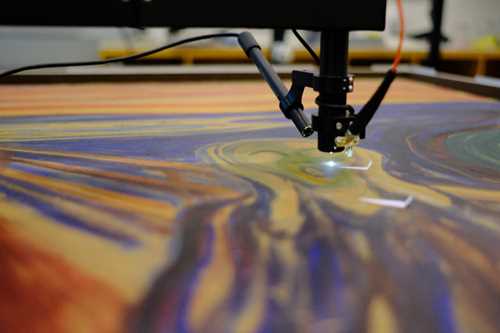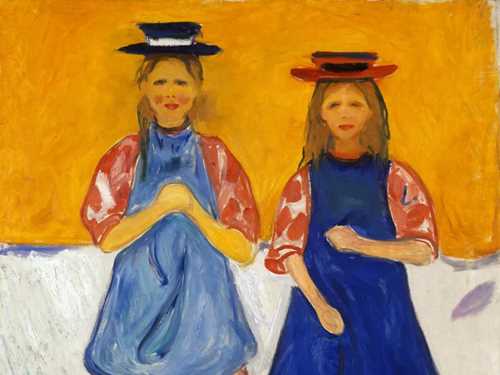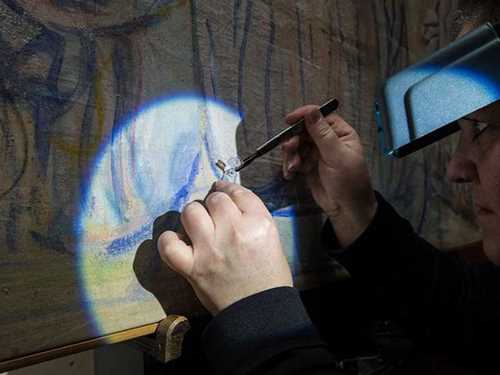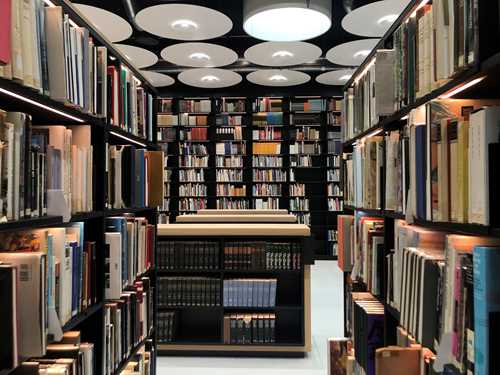Researchers have found out why The Scream is fading
New storage can extend the life of the iconic painting.
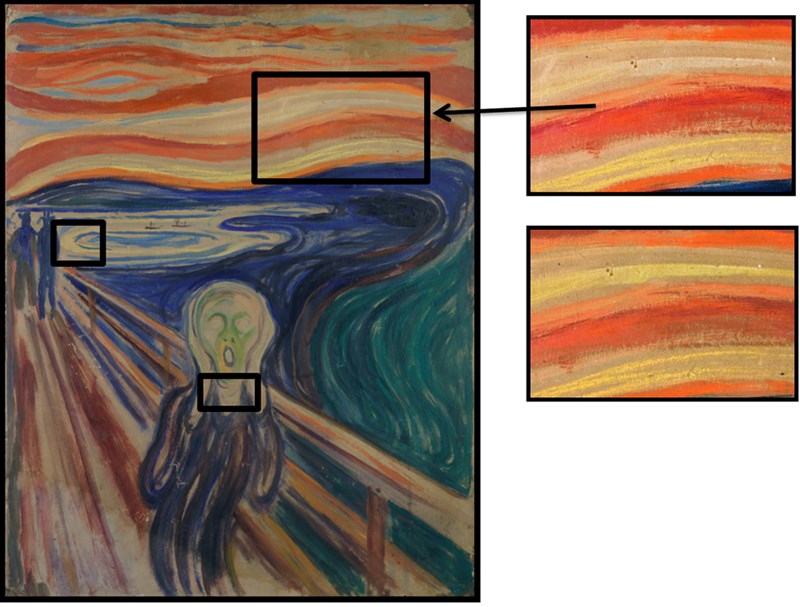
The first detail shows where in the painting cadmium yellow colour strokes have turned white. The second detail is a digital drawing, showing the painting prior to fading.
The Scream is exhibited in the museum at Bjørvika, and one of the museum's versions of the motif is always a part of the exhibition. But there are good reasons why the museum's very popular "1910?"-version of the painting has not always hung on the museum wall.
One is that the motif is painted on cardboard – which, despite being thick and stiff, is just as vulnerable and delicate as a sheet of paper. Another reason is that Edvard Munch occasionally used poor quality paints, such as an unfortunate mixture of cadmium yellow.
Cadmium pigment became popular with artists of the day after it became available as tube paint formulations around 1840, but today we know that the toxic pigment consisting of cadmium sulfide both fades, darkens and peels off under adverse conditions over time. In The Scream, several originally yellow colour strokes have turned white. This degradation phenomenon is also found in other well-known works, both by Munch and other artists, which have therefore long been the subject of international research.
won't last forever
None of the works Edvard Munch left behind when he died will last forever, and many of the prints and paintings were already in a fragile state when they became part of the museum's collection.
This is due to Munch not always taking good care of his artworks. In addition, the Scream returned in a damaged condition after the theft in 2004.
However, understanding the mechanisms behind the degradation of the cadmium yellow colour layers in The Scream is crucial to reducing further degradation, and to developing a preservation and exhibition strategy that best preserves the artwork for the future.
Therefore, in 2012 MUNCH entered into a collaboration with a research team at Scientific Analysis of Fine Art in New York, which has researched the degradation of cadmium yellow color layers.
Afterwards, the project was expanded to other laboratories in Europe and in 2017 it was granted a special Access to the MOLAB facilities through the IPERION international platform (European funding through grant H2020-INFRAIA-2014-2015, GA n. 654028). Thus, an international research team, led by Italy's National Research Center, examined six different versions of The Scream from the museum's collection. Original paint material was compared to artificially aged mock-ups prepared from cadmium yellow paint tubes that Munch himself owned.
new values
The latest research results show that - contrary to what was previously thought - light is not the main reason for the degradation of cadmium yellow coloured layers in the painting, but rather humidity.
To this day, The Scream has been stored and exhibited with a relative humidity of 45-55% RF, along with the rest of the collection. We now know that relative humidity should be kept at a lower level for the painting, and that The Scream must be stored in a climate chamber to achieve these particular values. The museum management is now looking into how to integrate a climate chamber in the future storage and exhibition situation of the work.

The new MUNCH: The tower, which sits on a three-storey podium, has two zones: one static and one dynamic. The static zone is an enclosed concrete structure, which complies with stringent security, humidity and daylight requirements in order to protect the art within. The dynamic zone, which has an open, transparent façade with views over the city, is where visitors can move between the different exhibition areas.
Photo © Adrià Goula
Light exposure affects almost all objects, including chemical reactions that result in colour changes such as fading or darkening. But light is not the culprit when it comes to the flaking and discolouration of The Scream.
The conservation research team at the museum will continue to research cadmium yellow colored layers in collaboration with the Italian research team in Perugia, to further understand the mechanisms behind the degradation.
The project is supported by IPERION.

